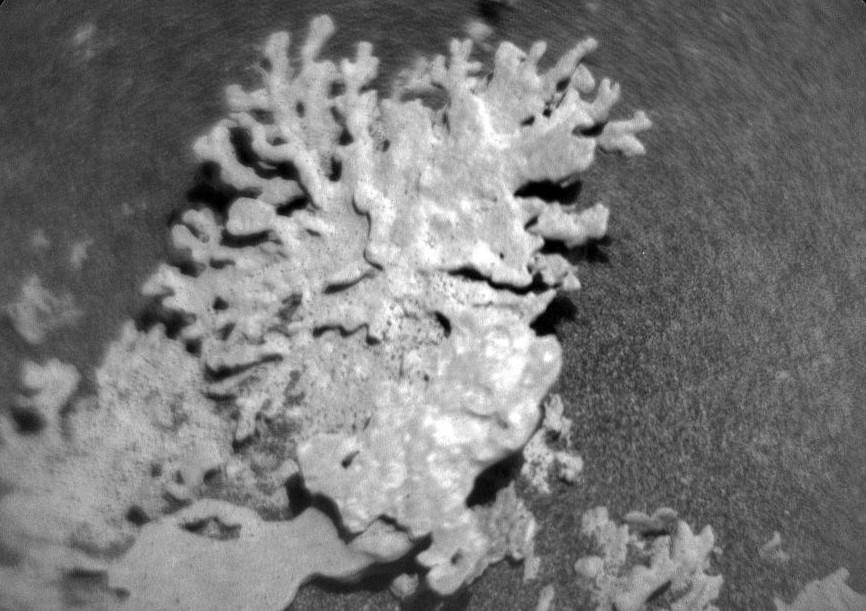
Coral-Shaped Rock Spotted on Mars, NASA Shares Pic
NASA’s Curiosity Mars rover has made another groundbreaking discovery on the Martian surface. The rover, which has been exploring the Red Planet since 2012, has sent back black and white images of a rock that bears a striking resemblance to a piece of coral. The fascinating find was made in the Gale Crater, a large impact basin on Mars, and is believed to be around a billion years old.
The discovery was shared by NASA on their official website, along with a stunning image taken by the rover’s ChemCam, a laser-induced breakdown spectroscopy (LIBS) instrument that is used to analyze the chemical composition of rocks. The image shows a large, rugged rock with a distinctive coral-like shape, complete with ridges and grooves that resemble the structure of coral reefs found on Earth.
According to NASA, the coral-shaped rock is a type of sedimentary rock that is composed of layers of minerals and rocks that have been compressed over time. The rock is believed to have formed in a ancient lakebed or ocean, where minerals and sediments were deposited and compressed over millions of years.
The discovery of this coral-shaped rock is significant not only because of its unique shape, but also because it provides valuable insights into the geological history of Mars. The Gale Crater, where the rock was found, is a 96-mile-wide (154-kilometer-wide) impact basin that is believed to have formed around 3.5 billion years ago. The crater is thought to have been filled with water and sediment, creating a lake-like environment that would have been hospitable to life.
The discovery of the coral-shaped rock is also significant because it provides evidence of a watery past on Mars. NASA’s Curiosity rover has previously found evidence of ancient lakes and rivers on Mars, as well as mineral deposits that suggest the planet may have once been warm and wet. The discovery of this rock provides further evidence of this watery past, and raises the possibility that life may have once existed on Mars.
The coral-shaped rock is just the latest in a long string of discoveries made by NASA’s Curiosity rover. Since its landing on Mars in 2012, the rover has discovered evidence of ancient lakes, rivers, and even an ocean on the Red Planet. The rover has also found evidence of methane and other gases in the Martian atmosphere, which could be a sign of microbial life.
NASA’s Curiosity rover is equipped with a range of instruments that allow it to analyze the Martian surface and subsurface. The rover is powered by a nuclear reactor and is designed to operate for at least 687 days, although it has already far exceeded its planned mission duration.
The discovery of the coral-shaped rock is a testament to the incredible capabilities of NASA’s Curiosity rover and the dedication of the scientists and engineers who designed and built it. As NASA continues to explore Mars, we can expect many more exciting discoveries to be made in the coming years.
Image Credit: NASA/JPL-Caltech
News Source: https://www.jpl.nasa.gov/images/pia26634-curiositys-chemcam-views-a-rock-shaped-like-coral/






